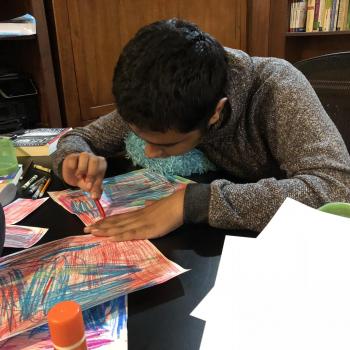Be Accepting of Different Behaviors and Learn a Bit about Autism
A few autism etiquette pointers that you should share widely with your Mosque-attending community:
– A person who does not return your salaam may be non-verbal, not realize that you are addressing them, or not be able to respond in the time you expect.
– Some people aren’t okay with social touching such as hugs, kisses or even handshakes. This probably has nothing to do with you personally.
-Some people have trouble with social boundaries and may try to hug you or get close to you before you indicate interest in such. They’ve probably been told to mind such social boundaries by parents and therapists. Politely refuse and back away if you need to, but be understanding.
– Some people don’t make eye contact. This may simply mean that they normally don’t. This may mean that they need to get used to their setting or you to make eye contact.
– Someone may need to stand a little apart from others in the prayer line. It is not a commentary on your personal hygiene. (Or is it?) Some may not understand the directive to form straight lines or not leave gaps between people.
– Someone who hums, rocks, flaps their hands, etc. is engaging in self-stimulatory behavior. This helps them tune out the sensory information that they don’t need to pay attention to, so they can focus on the things they need to focus on. It’s not something you need to focus or comment upon.
– Because of the difficulty of obtaining a diagnosis and the stigma attached to autism, someone who shows signs of autism may not be diagnosed with it or may not wish to share it with you. Don’t try to play doctor; just remember that it takes all kinds to make a world.
Next: Offer Classes to Help Teach Prayer to Autistic Muslims












